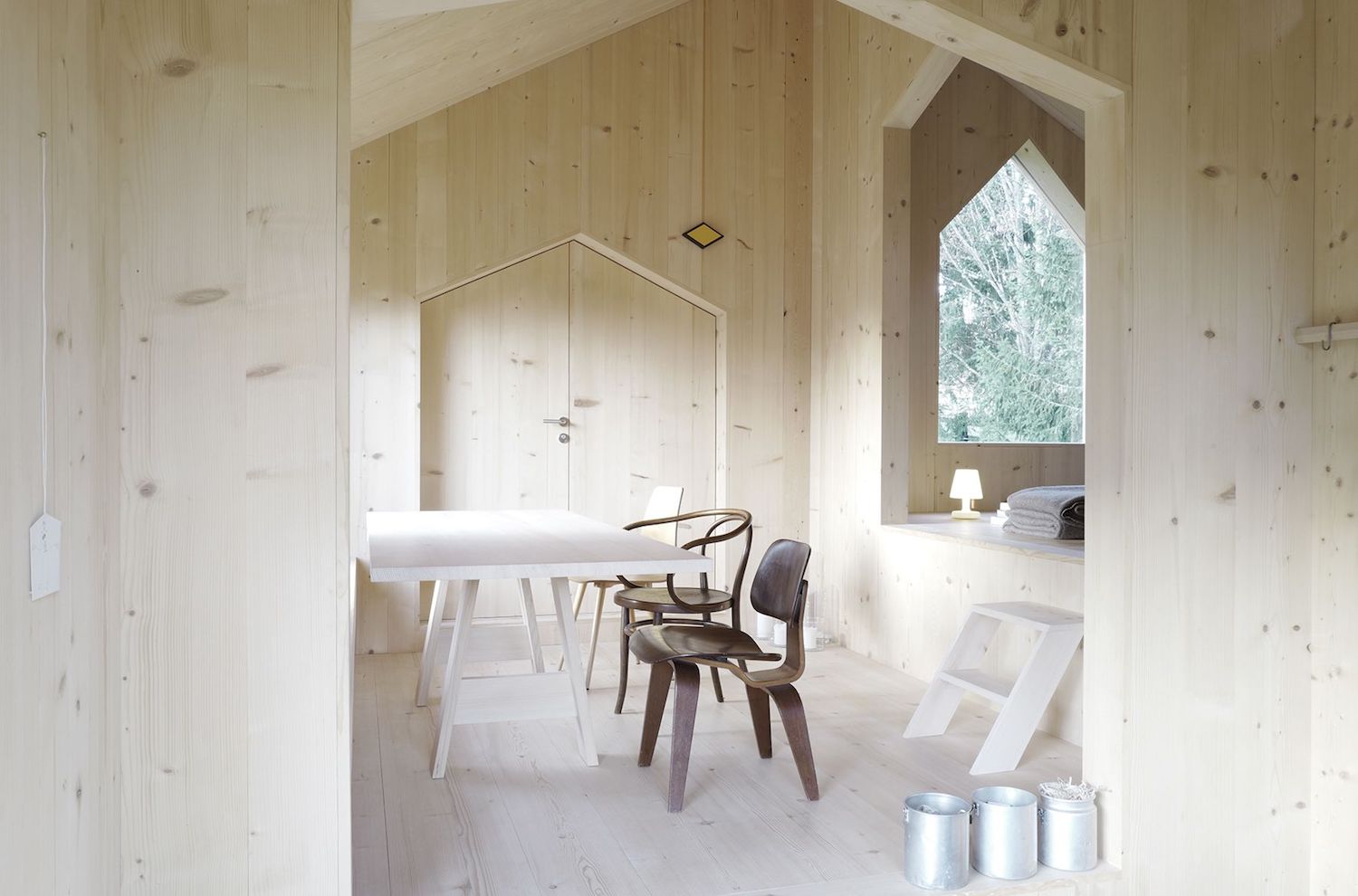Chalet in Brot-Plamboz is a minimalist residence located in Neuchâtel, Switzerland, designed by frundgallina. In relation to the exceptional landscape of equal value on all sides, the building area was divided into four identical portions of about 8 m2. These neighborhoods were then divided at a different altitude, chosen precisely to ensure their accessibility. This results in a great spatial variety, dictated essentially by the heights of the pieces. Thus, within the volume defined by the old cottage, three of the four surfaces could be organized on two levels to obtain a total of seven spaces of special uses. These “rooms” are connected to each other by large, medium or small openings, allowing a playful, spiral stroll, and continuously guaranteeing the perception of the whole of the interior space. Isolated from each other by strongly felt thresholds. On each facade are drawn a small and a large window, as well as a double door opening to the outside. Cutting the walls to different heights, they reveal to the visitor the principle of interior spatial organization.
Only the ridge of the two-sided roof directs the house. It does not have a specific entrance or rather it benefits from four. Thus, one enters and leaves most of the pieces, integrating the pastures with the distributive principle. The cabin is built entirely of wood. Fir boards from the Jura forests, rough sawn outside, and planed inside, were nailed vertically to the supporting structure of the facades and interior walls. The same boards, grooved-crêtées, cover the joisting to constitute the floors and the ceilings. A single sheet of stainless steel, folded specifically, covers the roof like a sheet of paper, reinforcing the fragile nature of the object. A pan is provided with a gutter harvesting rainwater. 100% energy autonomous, it is not connected to any distribution network. This construction experiments with the different themes that characterize our architecture: the simplicity and homogeneity of forms, the variety and spatial richness, the neutrality and expressive singularity, as well as the calm, the softness or the lightness emanating from the formal composition.
Photography by Jean-Claude Frund
